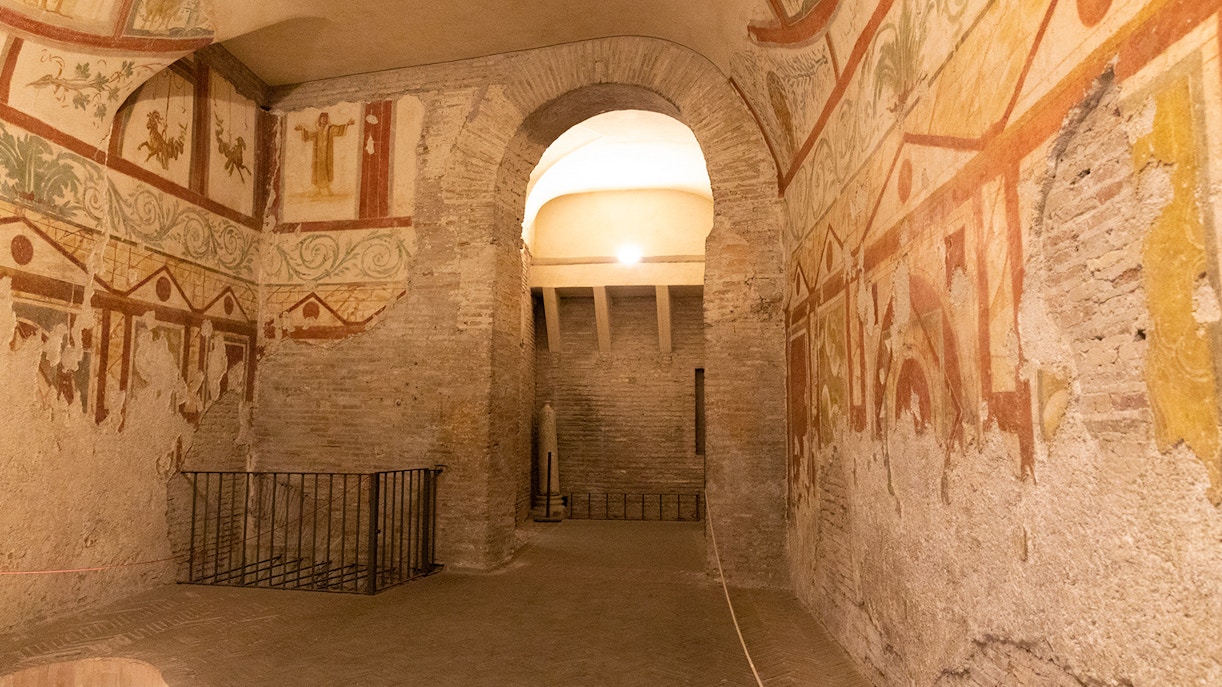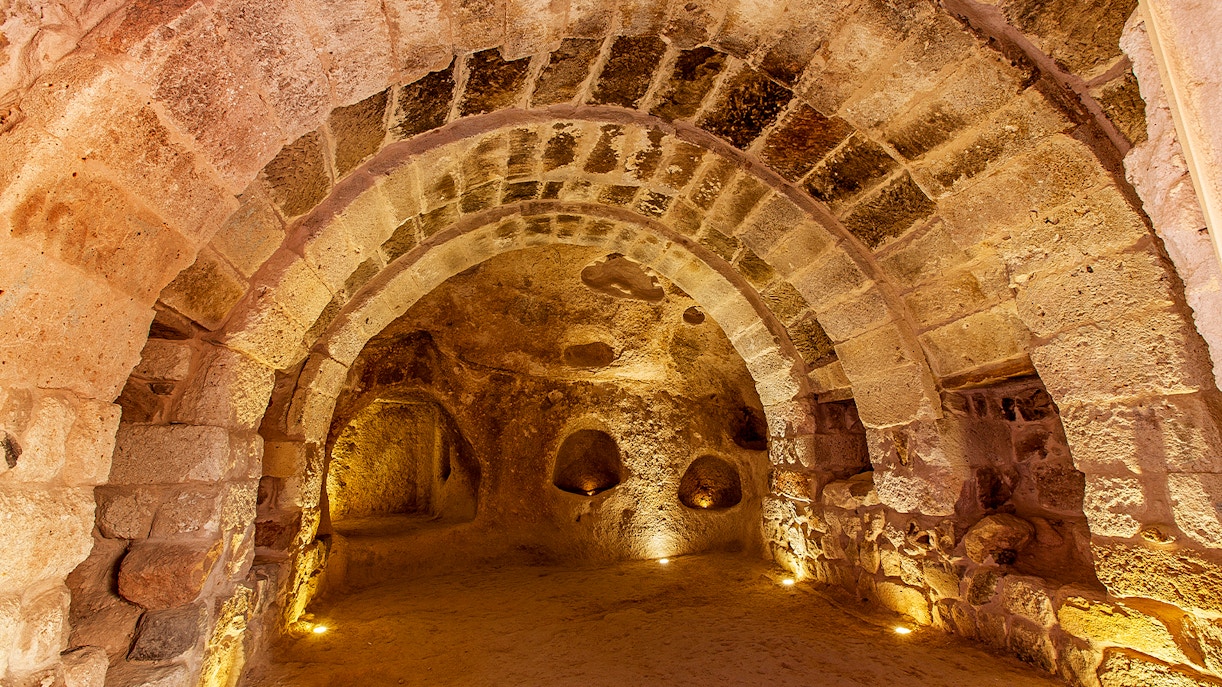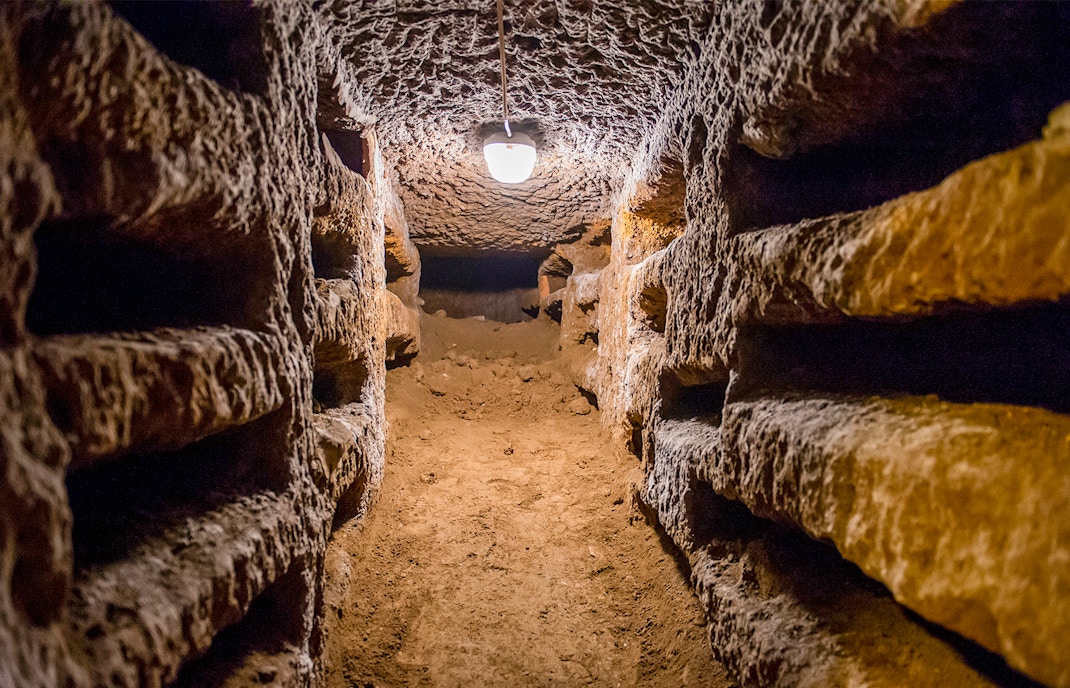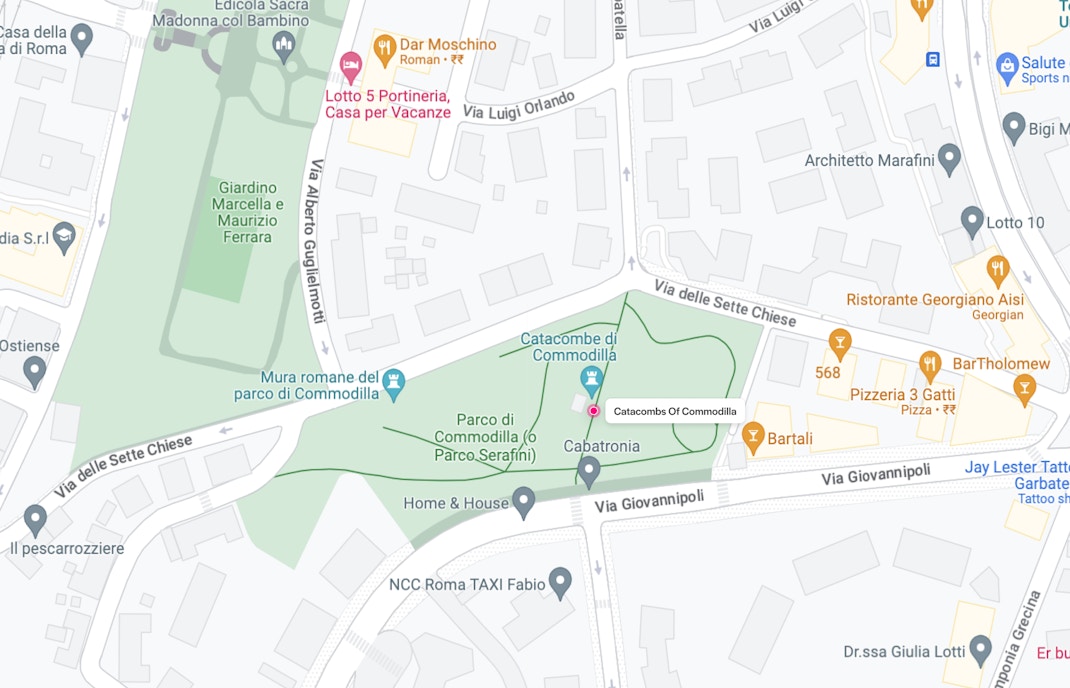- Official name: Catacombs of Commodilla
- Address: Via delle Sette Chiese 40-44, Rome, Italy
- Founded: 4th century
- Timings: Tuesday to Sunday: 9:00 AM to 12:00 PM, 2:00 PM to 5:00 PM (Closed on Mondays)
- Function: Burial site for early Christians
The Catacombs of Commodilla are an ancient underground burial site that dates back to the 4th century. The catacombs comprise three levels of underground tunnels and are believed to be the resting place to over 50,000 early Christians. Inside, visitors can explore a maze of narrow passages and beautifully decorated burial chambers adorned with frescoes and carvings. Some of the most famous frescoes in the Catacombs of Commodilla include the Adoration of the Magi, the Good Shepherd, and the Last Supper.




Today, visitors can explore the Catacombs of Commodilla and marvel at the stunning artwork that has survived for centuries. These underground chambers provide a unique and immersive experience, allowing you to step back in time and witness the historical and cultural significance of early Christianity.
The Commodilla Catacombs feature ancient tunnels and rooms that were used for burying early Christian martyrs. You can admire the intricate frescoes and artwork that decorate the walls and ceilings of the catacombs.
The Catacombs of Commodilla holds great historical and cultural significance as an ancient burial site for early Christians. Visiting them provides insights into early Christian beliefs, burial practices, and the challenges faced by the Christian community during a time of persecution.
Yes, the Catacombs of Commodilla are open to the public for guided tours. Visitors can explore the underground chambers and learn about the history and significance of the site from knowledgeable guides.
The catacombs are renowned for their intricate frescoes that depict scenes from the Bible, including the Last Supper, the Good Shepherd, and other religious motifs. Notably, the Catacombs of Commodilla are home to one of the earliest known depictions of Jesus with a beard, a significant representation that deviates from the earlier tradition of portraying him as a youthful figure.
There is generally no age restriction for visiting the catacombs. However, it is important to note that the underground passages can be narrow and dimly lit, which may not be suitable for very young children or individuals with mobility issues. It is advisable to assess your personal comfort and safety before planning a visit.
No, photography is not allowed inside the catacombs to ensure the preservation of delicate frescoes and artworks.
The Catacombs of Commodilla are located in Rome, a city rich in historical and cultural landmarks. Nearby attractions include the Basilica of St. John Lateran, the Appian Way, and the Baths of Caracalla, among others. It is worth exploring the surrounding area to make the most of your visit to this historically significant part of Rome.













Catacombs of St. Callixtus Tickets with Guided Tour
Roman Catacombs Guided Tour with Transfers
Capuchin Crypt Tickets with Audio Guide
Capuchin Crypt & Roman Catacombs Guided Tour & Transfers
Catacombs of St. Callixtus Guided Tour with Transfers
Catacombs of Domitilla Tickets with Guided Tour
Capuchin Crypt, Christian Catacombs & San Martino ai Monti Tour with Transfers
Catacombs of St. Callixtus Guided Tour
Papal Basilicas, St. Callixtus & St. Sebastian Catacombs Tour with Transfers
Catacombs of Domitilla and Capuchin Crypt Guided Tour with Transfers